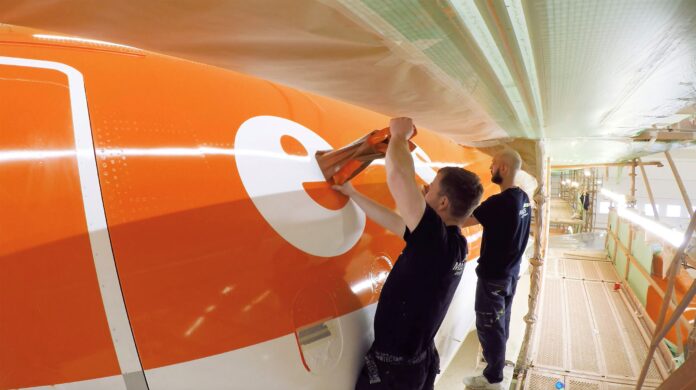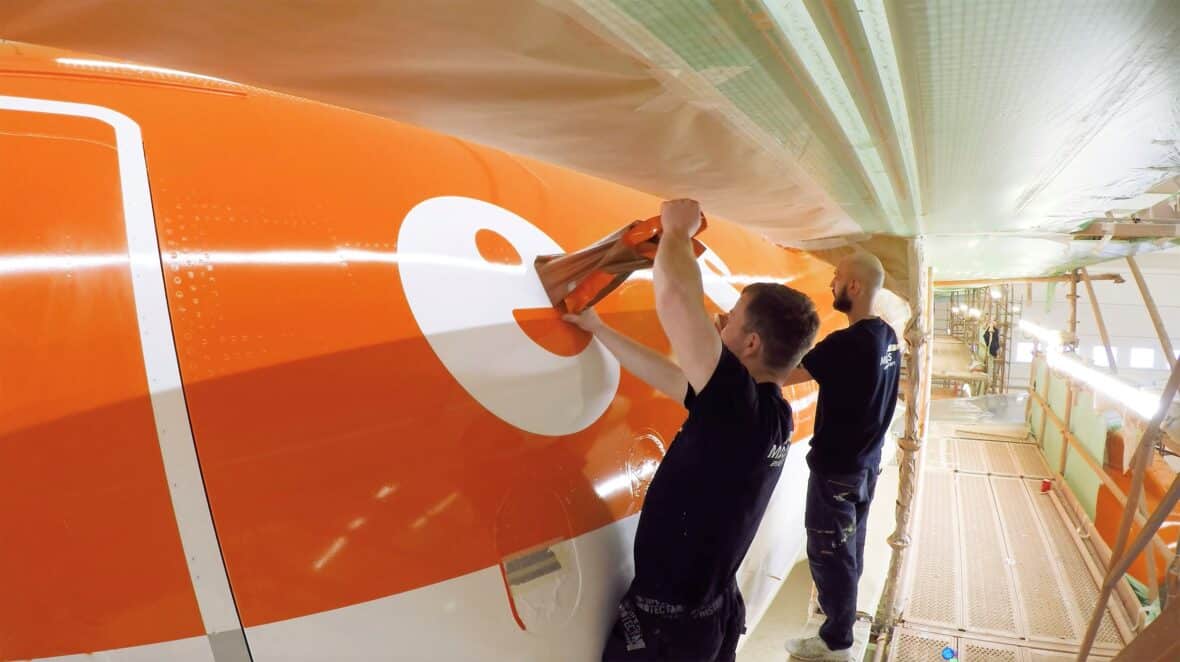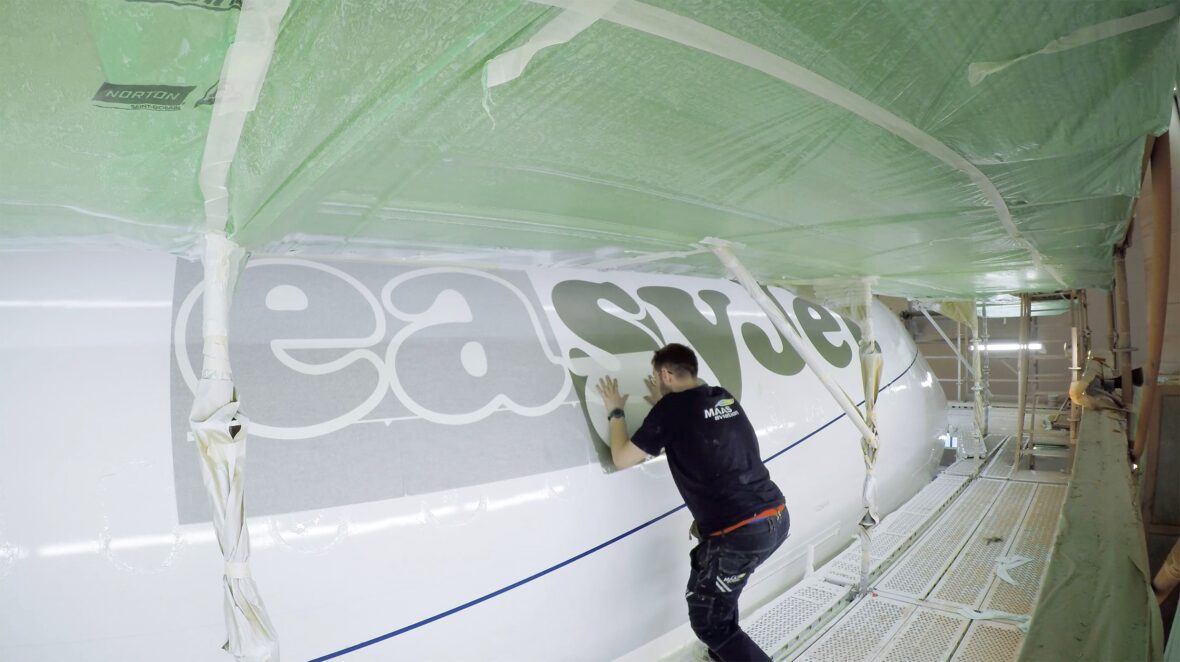
EasyJet has become the first airline in the world to trial a new state-of-the-art lower-weight paint, which will enable the carrier to make further savings on fuel.
EasyJet and its partner Mankiewicz Aviation Coatings have developed a new system that reduces the amount of paint previously needed to create the EasyJet livery colours. The innovative solution has already been applied to 38 aircraft and will be rolled out gradually to EasyJet’s entire fleet, with the airline due to complete the transition by 2030.

The solution was applied at Dublin-headquartered MRO (maintenance, repair and overhaul) firm MAAS Aviation, at its Maastricht office.
While the lighter weight coat generates a relatively modest impact per plane (27kg weight reduction), complemented with other fuel reduction methods and applied to entire fleets, this could provide another important method of reducing carbon emissions for the sector and is one of many initiatives that EasyJet is using to effectively reduce emissions and fuel burn.
The 38 EasyJet planes that have been coated with the new paint are already delivering fuel savings thanks to their lighter weight and once rolled out to the entire fleet will account for a 1,296 tonne fuel reduction – equivalent to 4,095* tonne reduction of carbon emissions.

Eventually, and complementary to easyJet’s sustainability strategy and roadmap to net zero, the lightweight paint is expected to contribute to an overall saving of 1296 tonnes of fuel per year – once the roll out is completed at the end of 2029.
Lahiru Ranasinghe, Director of Sustainability at EasyJet, said: “EasyJet is constantly exploring and developing innovative solutions to lower the impact of our operations. While this forms a small part of a bigger strategy, formulating a new lightweight paint with our partners at Mankiewicz Aviation Coatings exemplifies how we’re assessing every single part of our operation to find efficiency gains to help us achieve this mission.”




